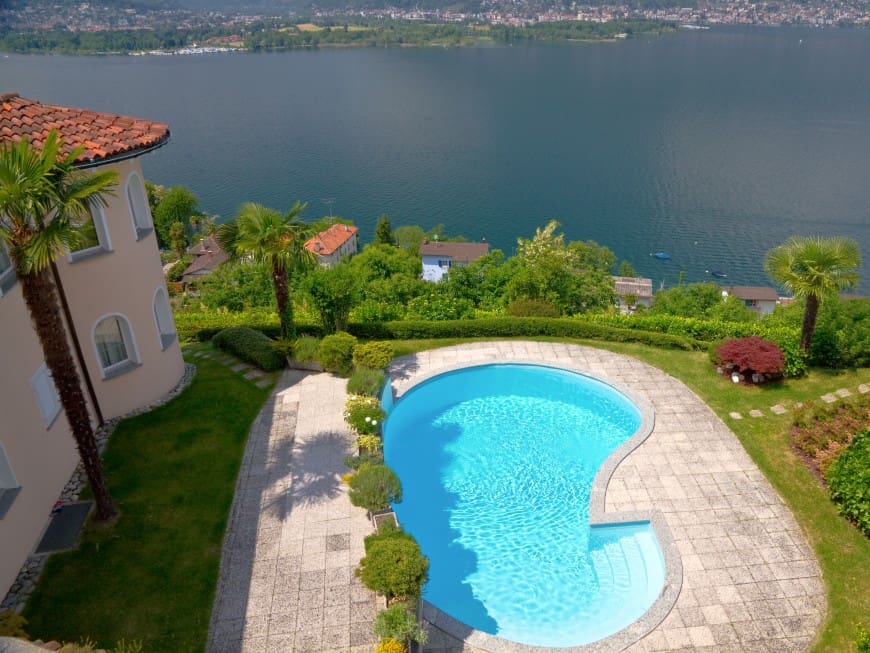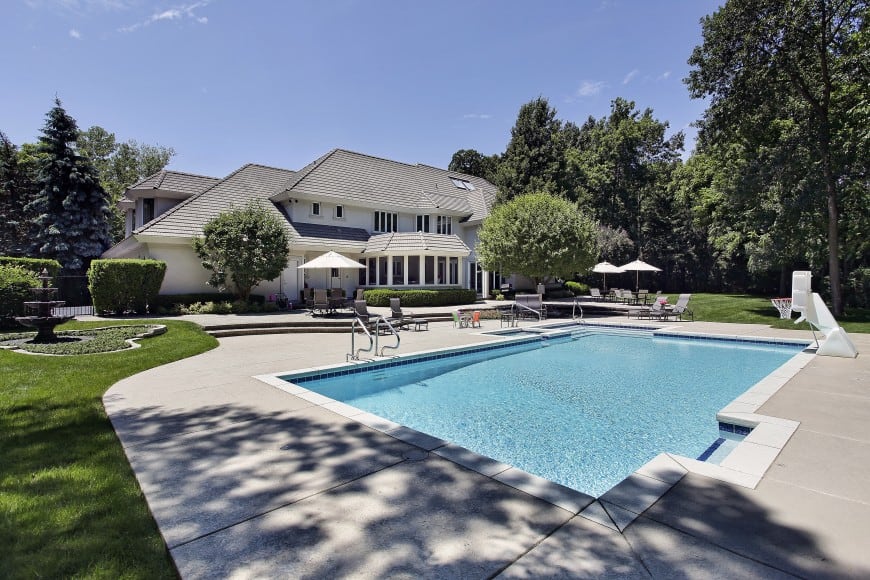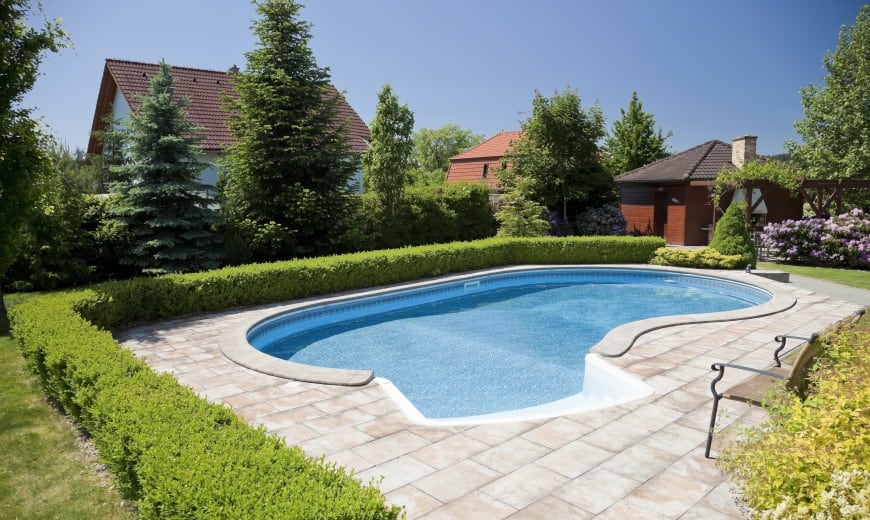A swimming pool is a cool refuge on hot days and quickly boosts your home’s value. Check out the following guide to inground pool sizes, shapes, and types to learn more.

With nearly 80 million Americans owning and selling their homes, it can be difficult to make your house stand out on the market.
Whether you’re selling now or still enjoying your home, an inground pool can be the perfect addition to your space.
How do you decide which pool materials are best for you? What inground pool sizes, shapes, and types will work best for your home’s design?
Read on for a complete guide to help you start constructing the perfect inground pool for your family.
The Value of an Inground Pool
Besides being a perfect opportunity for fun parties and summer gatherings, an inground pool also adds value to a home.
It’s a commodity for future homeowners looking for that extra-special something for their dream home. This is especially true for homes located in warmer climates.

Additionally, if you’ve opted for an inground pool over an above-ground pool, it means your investment will last for years to come. Inground pools are sturdier and more visually appealing than above-ground pools.
This means that if you plan on selling down the road, you’ll still have your beautiful pool to put your home above the rest.
The cost of inground pool construction is worth it when you can enjoy it longer and know that it will help your home sell faster.
If you’re ready to take the plunge (pun intended) and invest in an inground pool of your own, there are plenty of decisions to make first. Read on for a complete guide on choosing the inground pool that ‘s perfect for you.
Choosing Inground Pool Sizes, Shapes, and Types
Whether you want a small inground pool or a sprawling architectural pool, there are plenty of ways to design it. Take the time to consider various materials, types of pools, and pool shapes before you start construction.
Choose Your Material
There are various materials to choose from when designing your new inground pool. Many homeowners opt for a vinyl-line pool built from steel or concrete.
Pools made from steel are easy to design because the steel sheets can be molded into any shape. However, because the material oxidizes, it may not be a good option for certain soil types. Concrete may be a better option because it’s more durable when placed in the ground.
Another option is to choose a material called gunite.
Gunite pools use a rebar framework that’s sprayed over with a sand and concrete mixture.
This type of pool is a popular choice because it’s highly durable and is still flexible enough for a variety of shapes.
Choose Your Style
The style of your pool will likely vary depending on the style of your home and landscaping.
Modern homes with minimalistic designs will look better with a rectangular pool. On the other hand, some homeowners might prefer styling their pool into an architectural creation.
If you want to line your pool with tiles, you should choose a material that allows for the tiles to be attached. If you want to opt for an easier style, you can choose to have your pool lined with a patterned vinyl.
Now is also the time to decide if you want steps descending into your pool or not. If your goal is to design a recreational pool for kids, then you’ll want to take into consideration how much space you’ll need for a diving board, basketball net, and other kid-friendly additions.
Choose Your Shape
Your backyard will be the biggest deciding factor on what shape you make your pool. If you have plenty of space and a level lawn, you can easily opt for a large, rectangular pool. This tends to be the easiest choice if you want to add a row of sunbathing chairs or even a space for a grill.

If your backyard is more compact or slightly hilly, you’ll want to mold your pool into a more fitting shape. Opt for curved lines and compact size. Instead of it being limiting, take this opportunity to get creative.
Here Comes the Sun: Tips and Tricks Before You Build
Owning an inground pool requires special care and attention. As your swimming pool construction begins, take the time to think about additional details like maintenance. Here are some tips and tricks to help you upkeep your pool.
Accessorize
Now that you have the pool and the water, the only thing left is an array of pool accessories. This might mean a space for beach chairs or laying out towels.
If you want your pool to be kid-friendly, you might want to make storage space for pool floaties, life jackets, or umbrellas. You can even opt for large accessories like diving boards and slides.
For safety purposes, you should leave room in the budget for pool lights and a cover. These additional accessories will help make the pool a safe and clean place for summer fun.
Pool Maintenance
Although maintenance is sometimes the tricky part of owning a pool, it’s important to take the time to schedule regular cleaning and upkeep. Doing so will ensure that your pool lasts longer and doesn’t require major repairs.
Remember to clean and replace water filters and maintain safe water levels. If your pool is heated, you’ll want to place special care on checking the heater.
Most importantly, you’ll need to decide on a method of water treatment. Beyond traditional chlorine, there are also environmentally-friendly options like saline or mineral water.
No matter which type of sanitation you choose, it’s important to make sure it prevents algae and bacteria from growing in the water.
Annual Schedule
Finally, every pool owner needs to consider a calendar schedule for their pool. Most homeowners like to choose particular dates for opening and closing their pool.
You can opt for opening your pool in late May or early July, depending on where you live. Once the weather gets too cold for outdoor swimming, you’ll also want to schedule a time for closing it down until next year.
“Winterizing” your pool means following the steps to correctly close your pool. Balance the water chemistry and remove all baskets, wall fittings, and ladders. Then clean and lower the water level until it’s completely drained.
Just Keep Swimming
An inground pool is a perfect addition for homeowners looking to boost their homeownership experience and increase their home’s value. When deciding on the best inground pool sizes or types, it’s important to consider your home’s landscape and your family’s lifestyle.
If you’re looking for more ways to transform your backyard experience, check out our homeowner’s guide on designing your lawn and garden.
Related Posts
- 15 Main Pros and Cons of PVC Decking – Comparison and Discussion
- 12 Different Types of Wood for Outdoor Furniture with Pros/Cons
- 11 Different Types of Natural Stone for House Exterior
- Advantages and Disadvantages of Composite Decking for Homes
- What Color Siding Goes With Red Brick? Design Ideas With Pictures
- 8 Unique Porch Ceiling Ideas for your Home (with Photos)
Leave a Reply